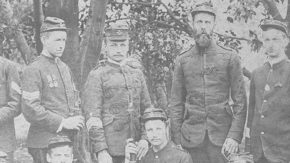CPR – lifesaving first aid
CPR
Cardiopulmonary resuscitation (CPR) can be lifesaving first aid. With no oxygen circulating, the brain dies within 3 – 6 minutes. Effective CPR can double or triple a person’s chance of survival especially if started within a few minutes of collapse.
Would you know what to do?
Remember your DRSABCD (Doctors ABCD)
Danger – check for danger, approach with care and do not put yourself in danger.
Response – gently shake their shoulders and call out to them.
If NO Response…
Send for help, dial triple zero 000 and ask for ambulance.
Airway – open mouth and check for foreign material which can be removed quickly.
Breathing – check for normal breathing by looking at the chest, listening by placing your ear close to the nose and mouth and feeling for breath on your face. This takes only 10 seconds.
Compressions – place heel of hand on central chest (sternum) with the other hand on top either grasping the wrist or interlocking the fingers. Depress the sternum about 1/3 of the chest depth using your body weight rather than just your arms. CPR is very tiring so if there are others who can help, share the work. Change over every 2 minutes if possible. The song Stayin Alive is the correct beat for giving compressions.
Defibrillator – is there a defibrillator close by? At school there is a defib in the Pool, Common Room, Drama Centre, Concordia, Prep schools, Boat Shed and Boarding House. Most shopping centres, large businesses, gyms and sporting centres have defibrillators available. These machines are easy to use and talk you through the process. If available, make sure to use it as it can greatly improve the outcome.
You can give compressions only, at a rate of 100 beats per minute for an adult, a little faster for a child, if you do not wish to give mouth to mouth.
The recommended compressions to breaths ratio is 30 compressions to 2 breaths. Tilt the head back and lift the chin. Pinch the nose while placing your mouth over theirs to make a good seal and blow air into their lungs. Watch the chest as you do this to ensure it rises with each breath.
Continue CPR until the paramedics take over or the person recovers.
Attending a first aid course is highly recommended so that you can gain more information and practice the skills on a mannequin. You could save a life.
Click here to view a CPR chart.
Sister Margaret Bates
School Nurse






